
Woerden municipality / Gemeente Woerden (U)
Town and municipality in the very west of the Utrecht province. The town is the successor of the Roman castellum Laurum. Between 719 and 722 St. Boniface worked here. Woerden originally was property of the bishop of Utrecht but in 1306 became part of Holland. It was part of the province of Zuid-Holland until 1989, when it merged with the former municipalities of Kamerik and Zegveld and became part of the province of Utrecht. In 2001 the former Harmelen municipality was added to Woerden as well.
Stad en gemeente in het westen van de provincie Utrecht. De stad is de opvolger van het Romeinse castellum Laurum. Tussen 719 en 722 werkte Bonifatius hier. Woerden was oorspronkelijk eigendom van de bisschop van Utrecht, maar werd in 1306 deel van Holland. Tot 1989 behoorde Woerden tot de provincie Zuid-Holland, toen de gemeente fuseerde met de gemeenten Kamerik en Zegveld en zelf ook bij de provincie Utrecht werd gevoegd. In 2001 ging ook de gemeente Harmelen op in Woerden.
Woerden
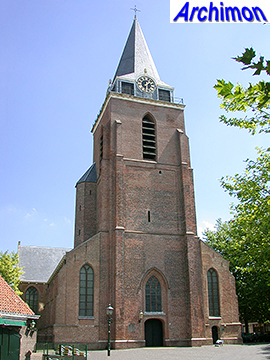
The reformed church, or Petruskerk, is a late-Gothic church from the 15th century and had at least two predecessors, built on the Locatie of the Roman castellum. The tower is older and dates from ca. 1375. An ambulatory was added to the choir in ca. 1500.
Location: Kerkplein 5
De hervormde kerk, of Petruskerk, is een laat-gotische kerk uit de 15e eeuw en had ten minste twee voorgangers, gebouwd op de plaats van het Romeinse castellum. De toren is ouder en dateert uit ca. 1375. Rond 1500 werd het koor uitgebreid met een kooromgang.
Locatie: Kerkplein 5
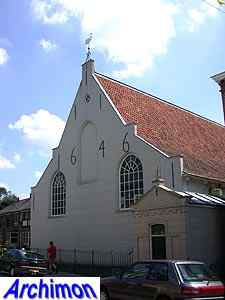
The Lutheran church is a three-aisled building from 1646. The Lutheran community of Woerden is the oldest in the entire country and dates back to 1520. In 1580 the church was officially legalized and was allowed to exist next to the official Calvinist reformed church. For a while the Lutherans met in a house, until this church was built. Although often called a hidden church its purpose is recognizable from the outside.
Location: J. de Bakkerstraat 11
De Lutherse kerk is een driebeukig gebouw uit 1646. De Lutherse gemeenschap van Woerden is de oudste van het land en dateert uit 1520. In 1580 werd de kerk officieel gelegaliseerd en mocht zij bestaan naast de officiële calvinistische gereformeerde kerk. Voor een tijdje gebruikten de lutheranen een huis, tot deze kerk werd gebouwd. Hoewel zij vaak een schuilkerk wordt genoemd is de functie aan de buitenkant goed te herkennen.
Locatie: J. de Bakkerstraat 11
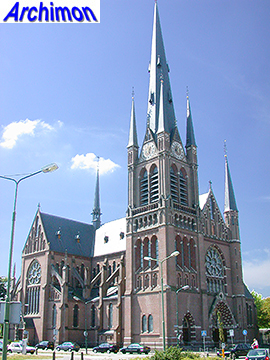
The Roman Catholic St. Bonaventura dates from 1890-1892 and was designed by N. Molenaar in Neo-Gothic style based on early French Gothic.
Location: Rijnstraat 60
De rooms-katholieke St. Bonaventura dateert uit 1890-1892 en is ontworpen door N. Molenaar in een neogotische stijl die is gebaseerd op de vroege Franse gotiek.
Locatie: Rijnstraat 60
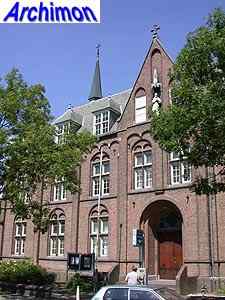
Next to the St. Bonaventura stands this Franciscan monastery. It dates from 1899 and was designed by J.H. Tonnaer.
Location: Wilhelminaweg 77
Naast de St. Bonaventura staat dit Franciscanenklooster. Het dateert uit 1899 en werd ontworpen door J.H. Tonnaer.
Locatie: Wilhelminaweg 77
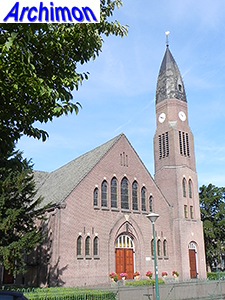
The Opstandingskerk
('church of the resurrection') was built in 1923 for the protestant
denomination of the Gereformeerden. Architect
H. Onvlee designed the church in a
style related to both Rationalism
and Expressionism.
Location: Wilhelminaweg 8
De Opstandingskerk werd gebouwd in 1923 voor de Gereformeerden. Architect H. Onvlee ontwierp de kerk in een aan zowel het rationalisme als het expressionisme verwante stijl.
Locatie: Wilhelminaweg 8
Kamerik
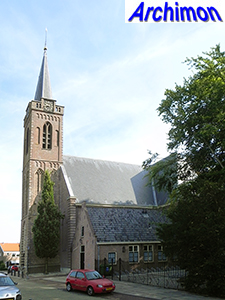
The reformed church is a building in neo-Classical style with a t-shaped ground plan, built in 1833-1834 to replace a medieval church of which the 16th-century tower remains.
Location: Burgemeester Talsmaweg 18
De hervormde kerk is een gebouw in neoclassicistische stijl en met een T-vormige plattegrond. De kerk werd in 1833-1834 gebouwd ter vervanging van een middeleeuwse kerk waarvan de 16e eeuwse toren behouden bleef.
Locatie: Burgemeester Talsmaweg 18
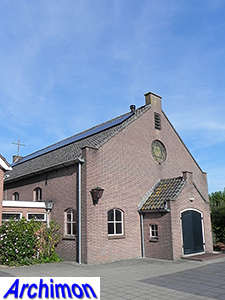
The Gereformeerde kerk or Ontmoetingskerk is an aisleless church in simple Traditionalist style. It was designed by B.W. Plooij and was built in 1948.
Location: Hallehuis 4
De Gereformeerde Ontmoetingskerk is een zaalkerk in een eenvoudige traditionalistische stijl, ontworpen door B.W. Plooij en gebouwd in 1948.
Locatie: Hallehuis 4
Kanis
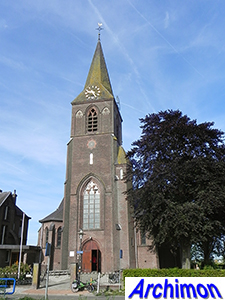
The St. Hippolytus is a cruciform church in neo-Gothic style, designed by W. te Riele and built in 1914-1915 in Kanis, a village that grew since 1856 around a previous catholic church two kilometers north of Kamerik.
Location: Mijzijde 132
De St. Hippolytus is een kruiskerk in neogotische stijl, ontworpen door W. te Riele en gebouwd in 1914-1915 in Kanis, een dorp dat was ontstaan na 1856 rond een eerdere katholieke kerk twee kilometer ten noorden van Kamerik.
Locatie: Mijzijde 132
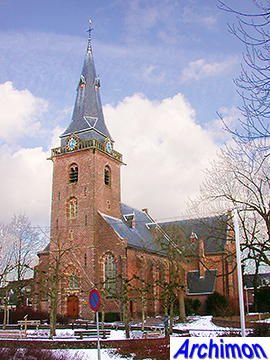
The reformed
church is essentially a late-Gothic building
from
the 15th century, but after a fire destroyed it in 1900 it was restored in Neo-Gothic style.
Location: Kerkplein 1
De hervormde kerk is in wezen een laat-gotisch gebouw uit de 15e eeuw, maar nadat een brand de kerk in 1900 verwoestte volgde een restauratie in neogotische stijl.
Locatie: Kerkplein 1
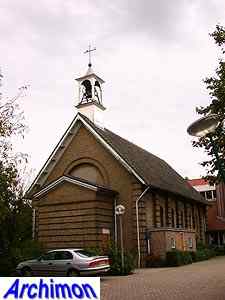
The
chapel of the catholic retirement home Huize Gaza is the remaining part
of the former St. Bavo
church. This church was designed in neo-Classical style by C. Kram and
built in 1839.
In 1917 it was abandoned and partly demolished later.
Location: Dorpsstraat 70
De kapel van het katholieke bejaardentehuis Huize Gaza is het resterende deel van de voormalige St. Bavokerk. Deze kerk werd ontworpen in neoclassicistische stijl door C. Kram en gebouwd in 1839. In 1917 werd het gebouw verlaten en later deels gesloopt.
Locatie: Dorpsstraat 70
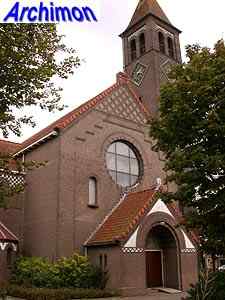
The
current St. Bavo
was designed in Neo-Romanesque style by J. Stuyt and built in
1916-1917.
Location: Ambachtsherenlaan 2
De huidige St. Bavo werd ontworpen in neoromaanse stijl door J. Stuyt en gebouwd in 1916-1917.
Locatie:
Ambachtsherenlaan 2